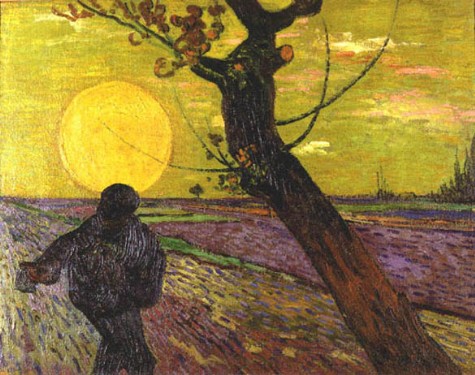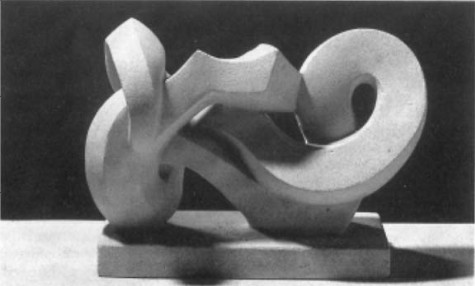Coming Attractions at Museums: May 2010

One of van Gogh's Sowers, inspired by Mallet's masterpiece, at the MFA
By Peter Walsh
Sowers United at the Museum of Fine Arts
Despite the Romantic Era notion that great art is always original, artists have always borrowed (or “reimagined” or stolen) each other’s ideas. Modern copyright lawyers would have had a field day with van Gogh’s various Sowers—blatant rip-offs (or “homages” if you prefer) of Millet’s iconic painting of 1850.
Millet’s “Sower,” which prolific lithographic reproductions made one of the most famous images in the world, was in a Boston private collection before van Gogh was born (it joined the Museum of Fine Art’s justly celebrated Millet holdings in 1917). So Vincent never saw the original. But he revered Millet’s work above all other artists. His own Sowers are not just restatements of Millet. Like a Russian icon, they extend the spiritual power of the image into a deeper realm.
For Visiting Masterpieces: Vincent van Gogh’s “The Sower” (on view May 11 through August 8), the MFA has brought its own treasure to commune with one of van Gogh’s: an 1888 “Sower” borrowed from Amsterdam’s Van Gogh Museum. Painted, along with many of the artist’s most famous works, during his extraordinarily prolific and ultimately devastating visit to the southern French city of Arles near the end of his life, this “Sower” is dwarfed by a gigantic sun and a twisted, blossoming tree—a reminder of another van Gogh obsession, Japanese prints. Despite van Gogh’s obvious reverence for his source, the effect is to utterly transform Millet’s original.
The MFA has added three other great van Gogh’s from the Provence period, including one painted just after his entry into the lunatic asylum at Saint Remy. As a side effect, the show is also a reminder of some of the MFA’s most powerful and important holdings.
Storrs at the Boston Athenaeum
Though John Storrs is hardly a household word, his name (or his work) may seem vaguely familiar. That is probably because he is included, pretty much as a passing footnote, in almost every major survey of 20th-century art.
That fleeting glimpse is probably much worse than a complete miss. It inevitably and unfairly relegates the American sculptor to the “extra credit” section of modern art history.

John Storrs, Untitled, 1937
That’s truly a shame. Storrs was not only a remarkable artist but a central figure in a pivotal era. A real life Zelig of modernism, Storrs knew, collaborated with, studied under, worked for, met, was a close friend of, was admired by, moved in the circle of, corresponded with, influenced, was influenced by, or was published by Marsden Hartley, Marcel Duchamp, Frank Lloyd Wright, Man Ray, Tristan Tzara, Louis Sullivan, Auguste Rodin, Ezra Pound, Jacques Lipchitz, Ernest Hemingway, Gino Severini, Jean Cocteau, Gertrude Stein, Alfred Stieglitz, Buckminster Fuller, Isamu Noguchi, Sherwood Anderson, and Alexander Calder, among many others.
Fortunately, John Storrs, Machine-Age Modernist, at the Boston Athenaeum May 12 through September 3, offers a much wider window into the achievements and obsessions of this fascinating American sculptor. The first Storrs retrospective of any kind in more than 20 years, this show focuses on his most recognizable work: his sleek, soaring, architectonic images, inspired by American skyscrapers.
A reviewer for the Christian Science Montor wrote admiringly of these: “I would like to see the new towers of Manhattan rise up in such a burnished beauty as Mr. Storrs indicates, with a new and rigid economy of material and architectural detail that would let them express all the shining efficiency of our metallic age.” Take in this show and it will be hard to tell which—Storrs or Manhattan—inspired which.
Tagged: Boston, Boston Athenaeum, John Storrs, Millet, modernism, Museum of Fine Arts, peter-Walsh, Sower
